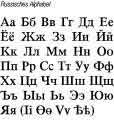About our perception channels
This lesson is about the visual and auditory perception system.
In the lesson next week, we will take a closer look at the kinesthetic, olfactory, and gustatory perception.
Our five senses are the gateways to our intelligence.
The way we feed our brain with stimuli largely determines how we shape our lives.
We experience our environment through our five senses: we see, hear, feel, taste, and smell.
All information from the outside reaches us through our senses.
We often store this information in the same way we received it:
Thus, we can see inner images, hear sounds, remember smells or tastes,
and we can also relive touches and even feelings in our minds.
Memories
Just take a moment to think about your childhood, perhaps about the house you grew up in.
How exactly do you remember it?
What comes to mind first about your parents' house:
Is it the image of the building or do you hear the sound of a familiar voice,
or maybe you just have a feeling that you associate with your home?
Is it a particular smell, perhaps the taste of a dish or a drink?
How do you remember?
We all remember differently.
The way we remember is closely linked to the senses we prefer to use.
Many people first see an image of their parents' house, while others remember sounds or feelings first.
Still others remember the smell.
So we remember by recalling sensory impressions and reliving them in our minds.
In NLP, it is said that we represent an experience through one or more of its sensory channels.
That is why the five different sensory channels are also called representation systems.
Visual channel
Let's first focus on your visual channel.
With the help of optical perception, you can capture your environment in four aspects:
color, shape, space, and movement.
Colors arise from the reflection of light on different surfaces.
Train your color sharpness by recognizing the different shades and consciously distinguishing fine nuances.
View the world like a painter!
With the eyes of a designer, follow the fascinating lines of objects and silhouettes with your eyes.
Identify visual patterns and observe how the different shapes affect your emotions.
The wonder of spatial perception arises from the brilliant interplay of both eyes.
In the brain, a sense of the depth of space is created.
When you cover one eye, you can immediately feel how your perception flattens.
The visual frequency arises from the interplay of time and space.
As soon as you look at a static space in the context of temporal change, you can recognize movement.
Atomic particles are never at rest – stillness is an illusion.
Life means movement, and your eyes are capable of tracking even the smallest changes.
Auditory channel

Now change the frequency of your perception.
Now it is no longer the reflections of light, but the waves of sound.
The path to auditory reality leads through the ears.
Unlike the visual system, the auditory system captures all directions simultaneously.
Sounds reach us even in the darkness of night.
The modern world offers you two types of auditory stimuli:
the auditory-tonal and the auditory-digital.
Tonal stimuli are sounds, noises, music, or the tone of spoken words – in other words, any kind of "sound".
They can be directly heard and understood by any living being.
Auditory-digital stimuli, on the other hand, can only be understood by humans,
who have a corresponding decoding system in their brains.
Only those who have learned the Russian language can decode the meaning of Russian words.
We also need the auditory-digital system for reading:
The intake of written information occurs through the visual channel,
but the words we read are digital characters, they must be decoded auditorily.
Human life takes place in a dynamic four-dimensional world,
and evolution took millions of years
for our eyes to be able to capture these coordinates so effectively.
Use your visual high-performance sensor consciously
and ensure that its performance is maintained for as long as possible,
by training it lovingly, systematically, and regularly.
In the next lesson, we will deal with the missing perception channels:










